Polaris pool cleaners are a popular choice for homeowners seeking automated pool maintenance. However, even these robust machines can experience malfunctions, such as the Polaris pool cleaner not working. Understanding common issues and the importance of regular maintenance can help to prevent frustration and ensure optimal performance.
Initial Troubleshooting Steps for Your Polaris Pool Cleaner
Having a Polaris pool cleaner can save you significant time and effort in keeping your pool sparkling clean. But even the best pool cleaners can encounter occasional issues.
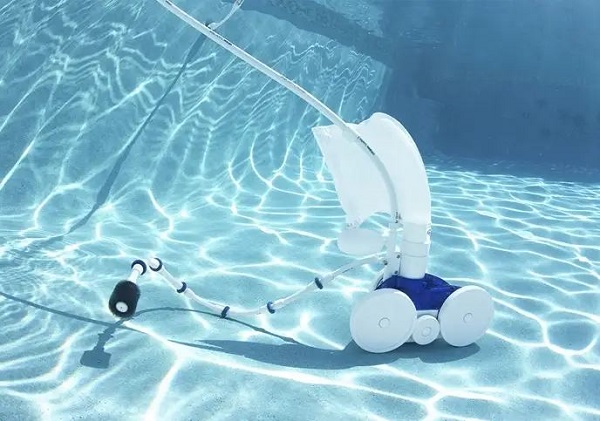
Getting Started with Your Polaris Pool Cleaner
Read the manual: Start by thoroughly reading the user manual provided with your Polaris pool cleaner. It contains valuable information about setup, operation, and troubleshooting specific to your model.
Assemble the Cleaner: Ensure the cleaner is assembled correctly according to the instructions. Double-check all connections, hose attachments, and components.
Inspect Before Use: Look over the pool cleaner for any visible signs of damage or wear. Ensure all parts are intact and securely connected.
Checking the Polaris Pool Cleaner’s Power Source
Verify Power Supply: Ensure the power supply is connected to a functioning electrical outlet. Check for any tripped breakers or blown fuses in your home’s electrical panel.
Power Cord Inspection: Inspect the power cord for any signs of damage, such as cuts, fraying, or exposed wires. Replace the cord if you find any issues.
Control Unit: Check that the control unit is turned on and set to the correct mode for cleaning. Ensure that any timers or settings are correctly configured.
Battery (if applicable): If your Polaris cleaner is battery-operated, ensure the battery is fully charged and properly installed.
Inspecting the pool cleaner’s hose for blockages
Disconnect the Hose: Carefully disconnect the hose from the pool cleaner and the return line or booster pump.
Visual Inspection: Lay the hose out flat and inspect it visually for any obvious blockages, kinks, or damage. Look inside each section of the hose for obstructions.
Clear blockages: Use a garden hose to flush out any debris from the pool cleaner’s hose. Push water through the hose sections to dislodge and remove blockages.
Reconnect the Hose: After ensuring the hose is clear, reconnect it securely to the pool cleaner and the return line or booster pump.
Ensuring Proper Water Flow to Your Polaris Pool Cleaner
Check the Pool Pump: Ensure the pool pump is running and operating at the correct pressure. Refer to your pool pump’s manual for the recommended pressure settings.
Inspect the Filter: Clean or backwash the pool filter to ensure it’s not obstructing water flow. A dirty or clogged filter can significantly reduce water flow.
Check the Pressure Relief Valve: Inspect the pressure relief valve on the Polaris cleaner to ensure it’s functioning correctly. It should release excess pressure, but not so much that it affects the cleaner’s performance.
Adjust Water Flow: Use the flow regulator or adjust the return lines to ensure optimal water flow to the Polaris cleaner. Some models have specific flow requirements detailed in the manual.
Inspect Booster Pump (If Applicable): If your Polaris cleaner uses a booster pump, ensure it’s working properly. Check for any signs of malfunction and verify that the pump is delivering adequate pressure.
Common Issues and Fixes for Your Polaris Pool Cleaner
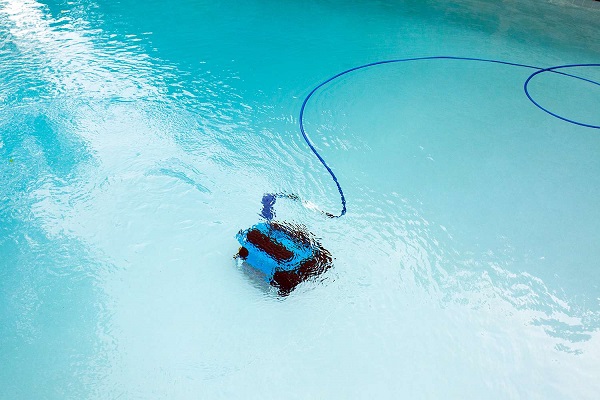
Troubleshooting Wheel Mobility Issues and Potential Fixes
1. Inspect the wheels:
Check the wheels for any obstructions, such as leaves, twigs, or other debris, that might be preventing them from turning freely.
Look for signs of wear or damage. Replace any wheels that are cracked, broken, or excessively worn.
2. Check the axles and bearings:
Examine the axles for any debris or buildup that could be restricting wheel movement.
Ensure the bearings are clean and lubricated. If they are worn out or damaged, they need to be replaced.
3. Adjust Wheel Tension: Verify that the wheel tension is correct. Too much tension can hinder mobility, while too little can cause slipping. Adjust the tension screws as specified in the manual.
4. Test the belt or drive mechanism:
If your Polaris cleaner uses a belt or other drive mechanism, inspect it for signs of wear or damage. Replace it if necessary.
Ensure the drive mechanism is properly aligned and tensioned according to the manufacturer’s instructions.
5. Inspect the Drive Shaft: Check the drive shaft for any signs of damage or wear. Ensure it is properly connected and rotates smoothly.
Diagnosing the Reasons Behind Poor Suction and Solutions
Check for Blockages: Inspect the intake and suction ports for any obstructions. Clear out any debris that might be blocking the flow of water.
Clean the Filter: Ensure the pool filter is clean. A dirty or clogged filter can reduce the overall suction power. Backwash or clean the filter as required.
Inspect the Pump: Make sure the pool pump is operating correctly and at the recommended pressure. A malfunctioning pump can lead to inadequate suction.
Examine the Hoses: Check all hoses for blockages, leaks, or kinks. Replace any damaged sections to ensure an unobstructed flow of water.
Verify Proper Connection: Ensure all hose connections are secure and tight. Loose connections can lead to air leaks, reducing suction efficiency.
Inspect the Diaphragm or Valve: If your Polaris cleaner has a diaphragm or valve, check it for wear or damage. Replace it if necessary to restore proper suction.
Debris Bag Issues
1. Checking if the debris bag is full:
Visual Inspection: Regularly inspect the debris bag to see if it is full. A full bag will appear bulging and may feel heavy.
Performance Check: If the cleaner’s performance has decreased significantly, it might be due to a full debris bag.
2. Emptying the Debris Bag:
Turn off the pool cleaner and remove it from the pool.
Detach the debris bag carefully and empty the contents into a trash bin.
Rinse the bag with a hose to remove any remaining debris and allow it to dry before reattaching it.
3. Inspecting for Proper Attachment:
Ensure the debris bag is correctly attached to the cleaner. Improper attachment can lead to debris escaping and reducing cleaning efficiency.
Check the clips or fasteners that secure the bag to make sure they are intact and functioning correctly.
4. Replacing the Debris Bag:
If the debris bag is damaged or worn out, replace it with a new one. Ensure you use a compatible bag for your specific Polaris model.
Maintaining Your Polaris Pool Cleaner for Optimal Performance
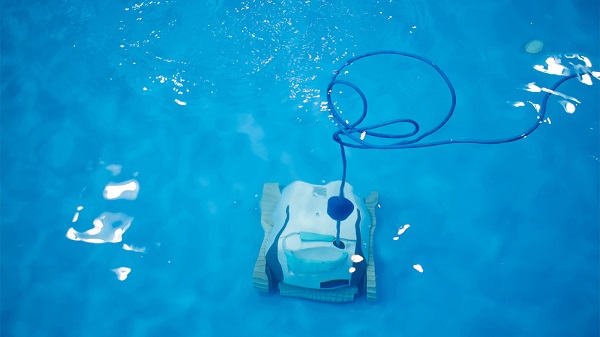
Cleaning and Replacing the Filter Bag Regularly
1. Regular Cleaning:
Frequency: Clean the filter bag after every use, or at least once a week during peak usage.
Procedure:
- Turn off the pool cleaner and remove it from the pool.
- Detach the filter bag from the cleaner.
- Empty the contents into a trash bin.
- Rinse the bag thoroughly with a garden hose to remove any residual debris.
- Check for any tears or damage. Replace the bag if it has damage.
- Allow the bag to dry completely before reattaching it to the cleaner.
2. Replacing the Filter Bag:
Signs for Replacement: Replace the filter bag if it shows signs of significant wear, such as tears, holes, or if it has lost its elasticity.
Procedure:
- Purchase a filter bag that is compatible with your Polaris model.
- Detach the old bag from the cleaner.
- Attach the new bag securely according to the manufacturer’s instructions.
Recommendations for Appropriate Lubricants for Wheels and Cleaner Parts
1. Choosing the Right Lubricant:
- Use a silicone-based lubricant for pool cleaner parts, as it is water-resistant and safe for use in wet environments.
- Avoid petroleum-based lubricants, which can damage plastic and rubber parts.
2. Lubricating Wheels and Moving Parts:
Frequency: Lubricate the wheels and moving parts every 2-3 months, or as needed based on usage and wear.
Procedure:
- Turn off the pool cleaner and remove it from the pool.
- Disassemble the necessary parts to access the wheels and moving components.
- Clean the parts with a soft cloth to remove any dirt or debris.
- Apply a small amount of silicone lubricant to the axles, bearings, and any other moving parts.
- Reassemble the parts and ensure everything moves smoothly.
- Test the cleaner in the pool to ensure proper operation.
Periodic Checks for Wear and Tear
1. Inspecting the Pool Cleaner:
Frequency: Perform a thorough inspection of your pool cleaner every month.
Areas to check:
- Wheels and Tracks: Look for cracks, excessive wear, or any damage. Replace it if necessary.
- Hoses and Connections: Check for leaks, cracks, or loose connections. Ensure all connections are secure, and replace any damaged hoses.
- Scrubbers and Brushes: Inspect cleaners and brushes for wear and replace them if they are worn down or damaged.
- Filter Bag and Debris Compartments: Ensure there are no tears or excessive wear in the filter bag and that debris compartments are functioning correctly.
- Drive Mechanism and Belts: Check the drive mechanism and belts for proper tension and signs of wear. Replace any worn-out belts or drive components.
2. Regular Maintenance:
Weekly Tasks:
- Empty and clean the filter bag.
- Check the cleaner for any visible debris or obstructions.
Monthly Tasks:
- Perform a detailed inspection for wear and tear.
- Lubricate moving parts as needed.
Seasonal Tasks:
- Before peak season (spring) and after (fall), conduct a comprehensive maintenance check.
- Clean or backwash the pool filter to ensure optimal performance of the pool cleaner.
- Inspect and replace any worn parts to prepare for heavy use.
Advanced Troubleshooting: Diving Deeper into Polaris Pool Cleaner Issues
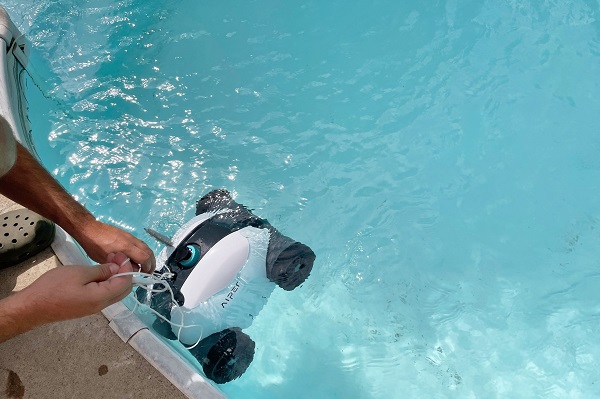
While the previous guides addressed common problems, some situations might require more in-depth troubleshooting.
Important Note: Attempt these steps with caution, and consult your Polaris owner’s manual for specific instructions and diagrams related to your model. If you’re uncomfortable performing these procedures, seek help from a qualified pool service professional.
Adjusting the Pool Cleaner’s Floats and Thrusters
1. Understanding Floats and Thrusters:
Floats and thrusters are crucial components that help control the buoyancy and maneuverability of your Polaris pool cleaner.
Floats are typically located on top of the cleaner and help regulate its depth in the water.
Thrusters are adjustable nozzles located on the cleaner’s body that direct water flow to control movement and navigation.
2. Float Adjustment:
If your Polaris cleaner is riding too high or too low in the water, adjusting the floats can help achieve optimal buoyancy.
To raise the cleaner in the water, move the floats closer to the cleaner’s body to raise it in the water. To lower it, move the floats away from the body.
Follow the manufacturer’s instructions for your specific Polaris model, as the adjustment method may vary.
3. Thruster Adjustment:
Thrusters help control the direction and stability of the cleaner as it moves through the pool.
Adjusting the thrusters can fine-tune the cleaner’s navigation, ensuring that it covers all areas of the pool effectively.
Use a small screwdriver or similar tool to adjust the thrusters’ direction, aiming them slightly inward or outward as needed for optimal movement.
4. Testing and fine-tuning:
After making adjustments, test the cleaner in the pool to see how it behaves. Monitor how the cleaner moves and navigates different areas of the pool. Fine-tune the adjustments as necessary to achieve optimal performance and coverage.
Checking for internal damage or malfunctions
1. Visual Inspection:
Start by conducting a thorough visual inspection of the cleaner’s internal components. Look for any signs of damage, such as cracks, breaks, or loose parts. Check all seals and gaskets for wear or deterioration.
2. Operational Testing:
Turn on the pool cleaner and observe its performance in the water. Listen for any unusual noises, vibrations, or irregular movements that could indicate internal malfunctions. Pay attention to the cleaner’s overall efficiency and effectiveness in cleaning the pool.
3. Inspecting the Drive Mechanism:
Examine the drive mechanism, including gears, belts, and pulleys, for signs of wear or damage. Ensure all components are properly aligned and functioning smoothly. Replace any worn or damaged parts to prevent further issues.
4. Checking Electronics (If Applicable):
If your Polaris cleaner includes electronic components such as sensors or control boards, check for any error codes or malfunction indicators. Consult the user manual or contact the manufacturer for guidance on troubleshooting electronic issues.
5. Professional Assessment:
If you suspect internal damage or malfunctions that you are unable to diagnose or repair yourself, consider contacting a professional pool cleaner technician. A trained technician can perform a comprehensive inspection and identify any underlying issues that may require repair or replacement.
Recognizing when to seek professional help
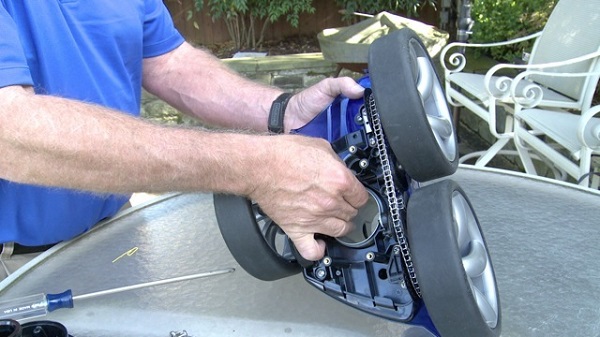
Identifying When It’s Time for an Upgrade rather than a Repair
Frequent breakdowns: If your Polaris pool cleaner requires frequent repairs or consistently fails to perform as expected, it may be more cost-effective to invest in a new model.
Obsolete Parts: If replacement parts for your current model are no longer available or difficult to find, it may be time to consider an upgrade. Older models may also lack compatibility with newer accessories or technologies.
Outdated Technology: Advances in pool cleaner technology may offer improved performance, efficiency, and features not available in older models.
Consider upgrading to take advantage of newer technologies that can enhance your pool cleaning experience.
Changes in Pool Size or Features: If you’ve expanded or renovated your pool, your current cleaner may no longer be suitable for the updated specifications.
Upgrading to a model with features like advanced navigation or built for larger pools can increase cleaning efficiency.
Comparing Models: Which Polaris Pool Cleaner is Right for You?
Cleaning Capacity: Consider your pool’s size and type. Larger pools may require a more powerful cleaner with greater coverage and suction capabilities.
Features and Technology: Evaluate features such as navigation systems, scrubbing brushes, and debris management options. Choose a model that offers the features you value most for your pool maintenance needs.
Durability and Reliability: Research customer reviews and feedback to assess the durability and reliability of different Polaris models. Look for models with a reputation for longevity and minimal maintenance requirements.
Budget and Value:
Determine your budget and compare prices across different models.
Consider the long-term value of investing in a higher-quality model with better performance and durability.
Compatibility and Accessories: Ensure compatibility with your pool’s existing infrastructure, such as pumps and filtration systems. Consider any additional accessories or attachments you may need, such as scrubbing brushes or remote controls.
Manufacturer Support: Research the manufacturer’s reputation for customer service, warranty coverage, and availability of replacement parts. Choose a model from a reputable manufacturer with a track record of standing behind their products.
Factors to Consider When Upgrading to a New Model
Pool Size and Type: Assess the size, shape, and features of your pool to determine the appropriate cleaning capacity and capabilities needed in a new model.
Technology and Features: Evaluate advancements in pool cleaner technology and consider features that can improve cleaning efficiency, navigation, and debris management.
Long-Term Cost: Consider the initial cost of the new model, as well as potential savings in maintenance, energy efficiency, and repair costs over time.
Compatibility and Integration: Ensure compatibility with your existing pool equipment, such as pumps, filtration systems, and automation systems. Look for models that seamlessly integrate with your pool’s infrastructure for optimal performance.
User Experience and Convenience: Choose a model that offers user-friendly controls, easy maintenance, and convenient features that align with your preferences and lifestyle.
Warranty and Support: Research the manufacturer’s warranty coverage, customer support, and availability of replacement parts for the new model. Select a model from a reputable manufacturer known for providing reliable customer service and support.
Optimizing Your Polaris Pool Cleaner for Peak Performance
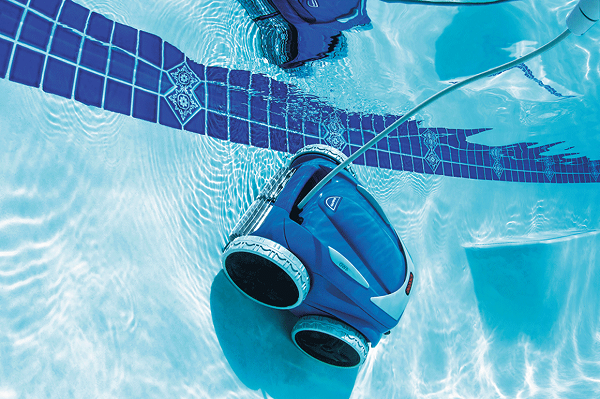
Understanding the Long-Term Benefits of Proper Maintenance
Extended Lifespan: Regular maintenance helps prevent premature wear and tear on your Polaris pool cleaner, extending its operational lifespan. Components that are properly maintained are less likely to fail or require costly repairs.
Improved Performance: Proper maintenance ensures optimal performance of your pool cleaner, resulting in more effective cleaning and debris removal. Regular cleaning and lubrication of moving parts prevent friction and ensure smooth operation.
Energy Efficiency: A well-maintained pool cleaner operates more efficiently, reducing energy consumption and lowering operating costs. Properly adjusted components, such as thrusters and floats, optimize water flow and navigation, minimizing energy waste.
Cost Savings: Investing in regular maintenance can save you money in the long run by reducing the need for expensive repairs or premature replacement of parts. By addressing minor issues early through maintenance, you can prevent them from escalating into larger, more costly problems.
Water Quality: A properly functioning pool cleaner helps maintain clean and healthy pool water by removing debris, algae, and other contaminants. Regular maintenance ensures consistent water circulation and filtration, preventing the buildup of algae and bacteria.
Optimizing Your Polaris Pool Cleaner for Specific Pool Types
In-Ground vs. Above-Ground Pools: Consider the design and dimensions of your pool when selecting a Polaris pool cleaner model. In-ground pool cleaners are designed for larger, deeper pools with varying surfaces, while above-ground pool cleaners are tailored to smaller, shallower pools with flat bottoms.
Pool Surface Material: Choose a pool cleaner that is compatible with your pool’s surface material, whether it’s concrete, vinyl, fiberglass, or tile. Some cleaners are specifically designed to handle rougher surfaces or delicate finishes without causing damage.
Pool Shape and Features: Select a pool cleaner that can effectively navigate and clean the specific shape and features of your pool, such as steps, benches, and irregular contours. Models with advanced navigation systems and adjustable settings can adapt to different pool layouts more efficiently.
Debris Types and Load: Consider the types and amounts of debris commonly found in your pool, such as leaves, dirt, sand, or algae. Choose a pool cleaner with appropriate filtration capabilities and debris management features to effectively handle the specific debris load in your pool.
Water Circulation and Filtration: Ensure your pool cleaner is compatible with your pool’s circulation and filtration system for optimal performance. Models with powerful suction and efficient filtration systems can help maintain clean and clear water with minimal effort.
Finding the Perfect Pool Service Partner for Your Polaris Cleaner
Keeping your Polaris pool cleaner and functioning optimally might require professional assistance at times.

Where can I find help for your Polaris pool cleaner?
Polaris Website: The Polaris website has a “Find a Local Pool Professional” section that can connect you with authorized Polaris service providers in your area.
Pool Supply Stores: Your local pool supply store is a valuable resource. Pool professionals can recommend qualified service providers who are familiar with Polaris cleaners.
Online Directories: Online directories like Angie’s List or HomeAdvisor can list pool service companies in your area. Read reviews and compare the services offered before making a decision.
Word-of-mouth referrals: Ask friends, neighbors, or family members who have Polaris cleaners for recommendations on reliable pool service companies they use.
What Questions to Ask When Choosing a Service Provider?
1. Experience and Expertise:
- How long have you been servicing Polaris pool cleaners?
- Are your technicians trained and certified to work on Polaris pool cleaners?
2. Services Offered:
- What types of services do you offer for Polaris pool cleaners? (e.g., repairs, maintenance, and installation)
- Do you provide on-site repairs, or do I need to bring the cleaner to your facility?
3. Warranty and Guarantee:
- Do you offer warranty repairs for Polaris pool cleaners?
- What is your guarantee or warranty policy on repairs and parts?
4. Parts and Replacement:
- Do you use genuine Polaris replacement parts for repairs?
- How quickly can you obtain replacement parts if needed?
5. Cost and Pricing:
- What are your rates for diagnostic services and repairs?
- Are there any additional fees or charges I should be aware of?
6. Scheduling and Availability:
- How soon can you schedule an appointment for service?
- Do you offer emergency or same-day service for urgent repairs?
7. References and Reviews:
- Can you provide references from satisfied customers?
- Do you have any online reviews or testimonials I can read?
8. Insurance and Licensing:
- Are you properly licensed and insured to perform pool cleaner repairs?
- Can you provide proof of insurance and licensing if requested?
This guide has outlined the essential steps for maintaining the optimal performance of your Polaris pool cleaner. Regular checks and adherence to the outlined maintenance procedures will ensure your Polaris functions efficiently for years to come. Should you encounter any issues, do not hesitate to consult a qualified professional for assistance.

Meet David Thomas, a seasoned professional with nearly 8 years of experience specializing in inspecting and resolving issues related to swimming pools. With his expertise and meticulous attention to detail, David ensures the safety and functionality of pools, making them a refreshing oasis for all to enjoy. Whether it’s troubleshooting equipment or maintaining water quality, David’s proficiency guarantees top-notch solutions tailored to meet every pool owner’s needs.
